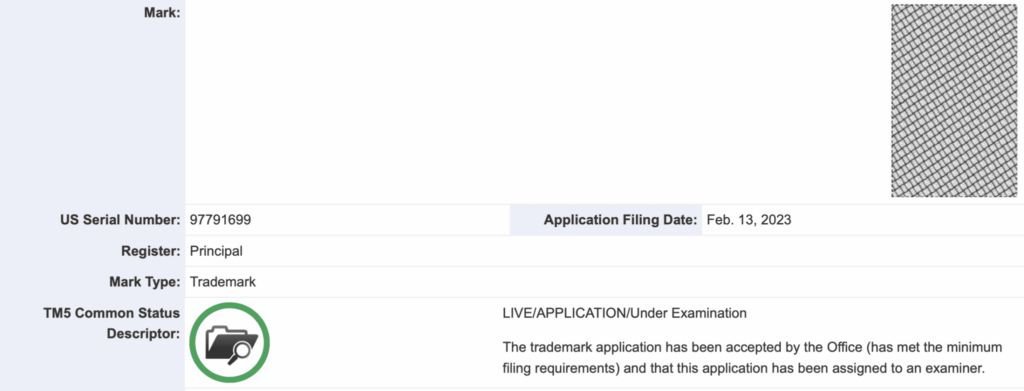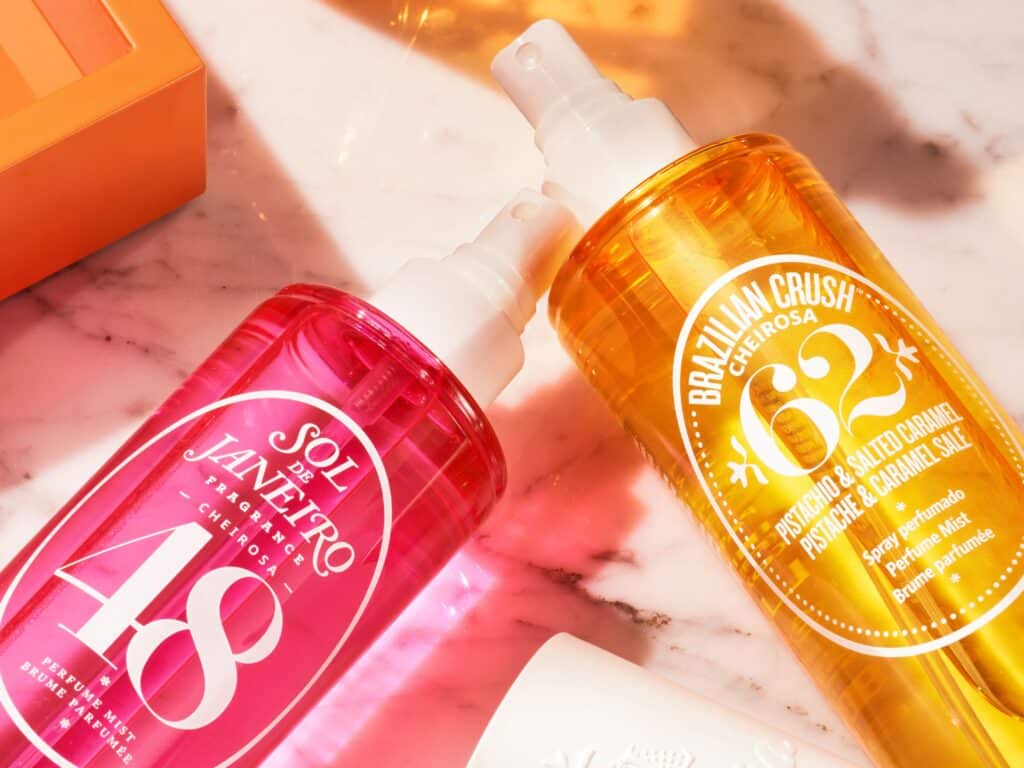The signature woven pattern behind a burgeoning handbag brand is at the center of an ongoing trademark back-and-forth. NAGHEDI is facing a significant setback in its bid to register its signature woven neoprene pattern as a trademark, with the U.S. Patent and Trademark Office (“USPTO”) issuing a final refusal to register its woven mark for use on handbags, stating that the design does not serve to indicate the source of the bags to consumers. Instead, it is “merely an ornamental, nondistinctive feature,” and ineligible for registration as a result.
The Background in Brief: In February 2023, NAGHEDI filed an application to register a configuration of “slim, uniformly-sized rectangular straps of neoprene interlaced, folded and woven to form a repeating weave pattern” for use on handbags, totes, clutches, and cosmetic pouches, among other accessories. The USPTO initially refused the mark last year, finding that the pattern does not function as a trademark because it appears as an all-over ornamental design that is commonly used in the fashion industry.
NAGHEDI pushed back in October 2024, arguing that the mark is distinctive – either inherently or as a result of acquired distinctiveness.

Distinctiveness, Decoration & Proof of Imitation
In a non-precedential Final Office Action dated June 20, the USPTO determined that the woven pattern is a common ornamental feature across the handbag market. The trademark examiner pointed to more than two dozen examples of similar designs from brands and retailers including Amazon, Dillard’s, Haute Shore, Tommy Bahama, and multiple Etsy sellers, concluding that “consumers are accustomed to seeing ornamental designs and patterns of woven neoprene strips on these types of bags.”
NAGHEDI has argued that its pattern is capable of serving a trademark function, drawing comparisons to Bottega Veneta’s intrecciato weave and Louis Vuitton’s Epi leather pattern. The company also cited case law for the proposition that ornamental features may be registrable if they operate as source indicators.
While the company stated that it “believes its mark is inherently distinctive,” it also supplied evidence of acquired distinctiveness. NAGHEDI claimed that the mark – which the company says has been used “continuously and exclusively” for over a decade – has become associated with a single source. The brand pointed to rising sales ($600,000 in 2021 to a projected $16 million in 2024), advertising expenditures exceeding $2.5 million over the past two years, and frequent media and celebrity exposure.
However, the USPTO was not convinced. The examining attorney asserted that sales and advertising figures may demonstrate commercial success but do not necessarily show that consumers perceive the pattern as a trademark. “Without additional evidence showing how applicant is educating the public to associate the proposed mark with a single source,” the Office wrote, “this evidence is not probative.”
NAGHEDI also raised the issue of imitation by competitors, citing examples of allegedly infringing products and detailing its efforts to enforce its rights through cease-and-desist letters. According to the company, this demonstrates that others in the market view the pattern as a source indicator – and an attractive one. The USPTO dismissed this, stating that the record failed to show whether NAGHEDI was the first to use the design and that the presence of lookalike products “does not establish who is copying whom.”
NAGHEDI now has three months from the June 20 Final Office Action to respond. The company may opt to submit additional evidence of acquired distinctiveness, amend the application to the Supplemental Register, or appeal the decision to the Trademark Trial and Appeal Board.
The Bigger Picture
The USPTO’s refusal to register NAGHEDI’s mark reflects broader challenges faced by fashion and accessories brands seeking trade dress protection for surface patterns. Notably, Bottega Veneta faced similar issues before ultimately securing a registration for its woven design in 2014.
Interestingly, the refusal also raises broader questions about the registrability of repeating material-based patterns – particularly in crowded consumer goods markets like handbags and accessories, where design elements such as woven textures, quilting, or embossed patterns are not only aesthetically driven but also widely used across a range of price points and brands. In such saturated categories, the ubiquity of certain materials and configurations can dilute their ability to function as source identifiers, making it more difficult for a single brand to claim exclusive rights in design features that consumers may view as ornamental, utilitarian, or stylistically generic rather than trademarked trade dress.
For brands operating in these spaces, this decision signals the high evidentiary burden required to prove that even a signature look is sufficiently distinctive – and not merely part of the visual vocabulary of the category.
If NAGHEDI’s application is ultimately abandoned or denied on appeal, it may set a cautionary tone for brands looking to protect widely used design elements. The ruling underscores that consistent use, sales growth, and even design imitation may not be enough without evidence that consumers associate the feature with a single source.














